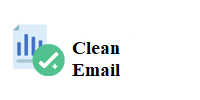Product photos are one of the most critical How to factors influencing buyer decisions on eBay. Unlike physical stores where customers can touch and examine products, online shoppers rely entirely on images to judge quality, condition, and appearance. Optimized product photos not only attract attention but can significantly increase your chances of making a sale. This guide explains how to effectively optimize product photos for eBay listings, ensuring your products look professional, clear, and appealing.
Why Photo Optimization Matters on eBay How to
-
Builds Buyer Trust: Clear, high-quality images increase buyer confidence.
-
Improves Listing Visibility: eBay’s algorithm favors well-presented listings, impacting search results.
-
Enhances Click-Through Rates: Attractive thumbnails grab attention in crowded listings.
-
Reduces Returns: Accurate images set realistic expectations, minimizing misunderstandings.
eBay’s Official Photo Requirements How to
Before optimizing your images, familiarize yourself with eBay’s basic photo guidelines:
-
Minimum Size: At least 500 pixels on the longest side (recommended: 1600 pixels for better quality).
-
Maximum Size: Up to 9000 x 9000 pixels or 12MB file size.
-
Background: Plain white or neutral backgrounds recommended.
-
File Formats: JPEG, PNG, TIFF, BMP, or GIF.
-
No Borders, Text, or Watermarks: Clean images without distractions.
-
Product Only: Show only the item for sale, unless showing scale or features.
Step-by-Step Guide to Optimize Product Photos for eBay How to
1. Use High-Resolution Images
-
Start with images of at least 1600 x 1600 pixels for sharp detail.
-
High-resolution photos allow zoom e-commerce photo editing functionality, helping buyers examine products closely.
-
Avoid pixelated or low-quality images that may discourage potential buyers.
2. Clean, Neutral Background
-
A plain white background is ideal and recommended by eBay.
-
If white isn’t suitable, use light gray or neutral tones to avoid distractions.
-
For small products, use lightboxes to the impact of lighting on color correction quality create evenly lit, seamless backgrounds.
Tools for Background Removal:
-
Adobe Photoshop (Quick Selection, Background Eraser)
-
Remove.bg (AI-powered automatic background removal)
-
Canva Pro (Simple background removal tool)
Consistent Lighting
-
Use soft, diffused lighting to eliminate harsh shadows and reflections.
-
Natural light near a window works, but avoid mixed lighting sources.
-
For studio setups, use softboxes or ring lights for even exposure.
-
Avoid overexposed or underexposed marketing list images, which hide product details.
Multiple Angles and Views
-
eBay allows up to 12 images per listing—use them effectively.
-
Capture:
-
Front view
-
Back view
-
Side angles
-
Close-ups of features or defects
-
Packaging (if included)
-
Scale comparison (use a ruler or familiar object)
-
Tip: Show every detail to build transparency and reduce buyer hesitation.
5. Highlight Key Features
-
Focus on unique product attributes, such as:
-
Brand labels or logos
-
Material textures
-
Buttons, zippers, or fastenings
-
Defects, damages, or wear (especially for used items)
-
Clear feature-focused photos demonstrate honesty and attention to detail.
6. Consistent Product Positioning
-
Use a tripod to maintain the same framing.
-
Position products at eye level to present them realistically.
7. Optimize Image Size and Format
-
Save images in JPEG for smaller file sizes with good quality.
-
Aim for 1600 pixels on the longest side to enable eBay’s zoom feature.
-
Avoid excessive compression to prevent quality loss.
Free Compression Tools:
-
TinyJPG / TinyPNG
-
ImageOptim
-
Squoosh by Google
8. Mobile-Friendly Considerations
-
Over 60% of eBay buyers browse via mobile devices.
-
Ensure product is centered and clearly visible when viewed on smaller screens.
-
Test how your images appear on mobile to ensure key details are not cropped.
9. Maintain Brand Consistency (for Businesses)
-
Use uniform backgrounds, lighting, and angles across all listings.
-
Present your store with a consistent, polished look to build brand recognition.
10. Avoid Common Mistakes
-
Do not use stock photos for unique, used, or handmade items.
-
Avoid heavy filters that distort colors or details.
-
Never include promotional text, logos, or borders in images—this violates eBay’s rules.
-
Do not neglect defects; honesty about product condition builds credibility.
Additional Pro Tips for eBay Photo Optimization
| Tip | Benefit |
|---|---|
| Use a lightbox or softbox | Even lighting, professional appearance |
| Capture lifestyle shots (if allowed) | Helps buyers visualize product use |
| Edit with photo software | Adjust brightness, contrast, and sharpness for clarity |
| Show scale with props | Prevents misunderstandings about size |
Conclusion
Optimizing product photos for eBay listings is more than just taking pictures—it’s about presenting your products in the best possible light to attract buyers and increase sales. High-resolution, clear, and well-lit images with neutral backgrounds and consistent presentation enhance your listings, build trust, and drive conversions.
